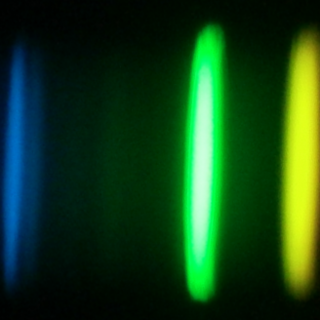Bibcode
Kilic, Mukremin; Brown, Warren R.; Kenyon, S. J.; Allende-Prieto, C.; Andrews, J.; Kleinman, S. J.; Winget, K. I.; Winget, D. E.; Hermes, J. J.
Bibliographical reference
Monthly Notices of the Royal Astronomical Society: Letters, Volume 413, Issue 1, pp. L101-L105.
Advertised on:
5
2011
Citations
47
Refereed citations
43
Description
We identify SDSS J010657.39-100003.3 (hereafter J0106-1000) as the
shortest period detached binary white dwarf (WD) system currently known.
We targeted J0106-1000 as part of our radial velocity programme to
search for companions around known extremely low-mass (ELM; ˜0.2
M&sun;) WDs using the 6.5-m Multiple Mirror Telescope. We
detect peak-to-peak radial velocity variations of 740 km s-1
with an orbital period of 39.1 min. The mass function and optical
photometry rule out a main-sequence star companion. Follow-up high-speed
photometric observations obtained at the McDonald 2.1-m telescope reveal
ellipsoidal variations from the distorted primary but no eclipses. This
is the first example of a tidally distorted WD. Modelling the light
curve, we constrain the inclination angle of the system to be
67°± 13°. J0106-1000 contains a pair of WDs (0.17
M&sun; primary + 0.43 M&sun; invisible secondary)
at a separation of 0.32 R&sun;. The two WDs will merge in 37
Myr and most likely form a core He-burning single subdwarf star.
J0106-1000 is the shortest time-scale merger system currently known. The
gravitational wave strain from J0106-1000 is at the detection limit of
the Laser Interferometer Space Antenna (LISA). However, accurate
ephemeris and orbital period measurements may enable LISA to detect
J0106-1000 above the Galactic background noise. Based on observations
obtained at the Multiple Mirror Telescope (MMT) Observatory, a joint
facility of the Smithsonian Institution and the University of Arizona.
Related projects

Chemical Abundances in Stars
Stellar spectroscopy allows us to determine the properties and chemical compositions of stars. From this information for stars of different ages in the Milky Way, it is possible to reconstruct the chemical evolution of the Galaxy, as well as the origin of the elements heavier than boron, created mainly in stellar interiors. It is also possible to
Carlos
Allende Prieto